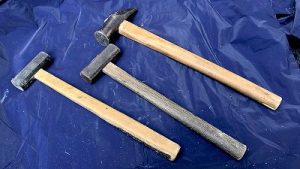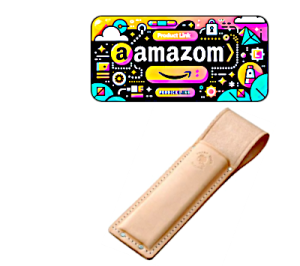In the world of woodworking, the “鑿” (known as “ノミ” in Japan) is an incredibly useful tool. You may have heard of chisels, but the impression that they are difficult to handle might make you hesitant to try them out. It’s true that chisels are renowned for their depth, and even skilled professionals may find them challenging. However, using a chisel itself is not as difficult as it might seem.
This guide is aimed at those who are purchasing a chisel for the first time and provides fundamental information on its usage and maintenance. Mastering the use of a chisel can be particularly beneficial, especially in the context of DIY projects and crafts. I encourage you to give it a try and experience how it can significantly enhance your woodworking endeavors.
日本語版の記事(鑿(ノミ)の使い方【初心者向け】プロの大工が詳しく解説)はコチラ
List of Contents
Article Author

Kentarou Fukata
A Kyoto, Japan native born in 1985, I am a seasoned carpenter boasting five national qualifications in housing-related disciplines in Japan. Committed to the dissemination of carpentry expertise, I actively contribute to professional development within the field through instructional content on YouTube.
Introduction Video
Complementing the guide is an informative video designed to augment comprehension.
If you wish to utilize features like subtitles, please reopen the video on YouTube. You can access the subtitles through the ‘CC’ button on the playback screen or in the settings.
What is a Standard Chisel (Carpenter’s Chisel)?

Chisels can be broadly categorized into two types: “carpenter’s chisels” and “carving chisels” used by shrine carpenters (miyadaiku) for sculpting. Carpenter’s chisels, also known as “daiku nomi” in Japan, are the tools employed by carpenters who construct Japanese homes. They are designed for shaping flat surfaces, creating angles, and crafting joinery in wood. To accommodate various woodworking tasks, carpenter’s chisels come in a range of widths and sizes.
The distinctive feature of a carpenter’s chisel is its parallel blade width, tailored to match the diameter of the holes being dug. This design has evolved and matured over the course of Japan’s architectural history to excel in woodworking processes such as cutting and striking.
For ease of sharpening, carpenter’s chisels typically feature a dual-layered blade structure with steel for the cutting edge and a softer metal for the body, and the backside of the single-edged blade serves as a makeshift ruler for flat surface work.
Furthermore, these chisels are constructed with straight-line configurations of the handle and blade to efficiently transfer impact force during strikes.
Four Reasons Why Chisels Are Necessary

Shaping Flat Surfaces and Angles
Chisels come with a built-in guide (back of the blade) for flat surface work, allowing you to set angles and automatically perform flat surface shaping. Additionally, by cutting with the blade’s edge, you can simultaneously shape angles. With skillful use, it’s possible to achieve high-precision work easily.
While convenient machining machines have become prevalent in recent years, these machines often come with usage limitations, and chisels continue to have their place in woodworking.
Swift and Efficient Work
Chisels are primarily used to work on wood by striking them with mallets or hammers. Even in finishing work where they are pushed (thrust), their shape makes it easier to apply force compared to knives.
In woodworking, tasks such as splitting along the wood grain or cutting directly across the fibers place significant demands on tools. Chisels not only offer precision but also excel in durability. As one hones their skills, chisels enable swift and efficient work.
Easy Maintenance
Chisels are regularly sharpened for use, causing their blades to gradually shorten. Similar to other Japanese edged tools like kitchen knives, chisels, being a Japanese edged tool, are designed with the assumption of regular sharpening and maintenance. The combination of hard steel and soft iron enhances their compatibility with sharpening stones, making it easy to shorten the blade effectively. This characteristic also influences the sharpness of the blade.
Furthermore, sharpening chisels is not only about improving blade sharpness but also about maintaining the optimal shape required for wood processing. Chisels are versatile tools that can be easily adjusted in shape. Mastering sharpening allows for even more precise and efficient woodwork.
Capable of Deep Hole Work
Chisels are also used for crafting “hozoana,” pillar holes, with dimensions around 3cm x 9cm and depths ranging from 6cm to 9cm. Even in deep holes like hozoana, chisels allow for accurate and rapid excavation. This is a type of work that cannot be accomplished with knives.
By the way, when working on thick wooden components such as beams and rafters (which can be as thick as 33cm), specialized long chisels (striking chisels) are used to reach deep into the wood.
How to Use and Handle a Chisel

How to Use a Chisel (Basic)
Orientation for Using a Carpenter’s Chisel
When using a carpenter’s chisel, place the backside of the steel against the material.
*If using a carving chisel, conversely place the front side against the material.
Carpentry work, such as in the construction of Japanese houses, requires flat surfaces. The backside of the chisel serves as a guide for creating flat surfaces, allowing you to set the angle and strike it to achieve the desired flatness.
You can feel the ease of creating flat surfaces even when sharpening a pencil. Using the front side of the blade or a utility knife may result in digging or uneven finishes, but using the backside of a chisel allows you to smoothly carve straight lines. Give it a try.
Use a Hammer to Strike

This might seem obvious, but using a hammer for striking allows for faster work. Since you handle the hammer with your dominant hand, you use the chisel with your non-dominant hand. Initially, it may feel unfamiliar, and there is a possibility of accidentally striking your hand holding the chisel. Gradually, you’ll become more accustomed to it! As you practice, the hammerhead and chisel edge will function as extensions of your body.
Work in Two Stages
While there are many tips for chisel work, in this basic guide, we’ll share one essential tip. When using a chisel, start by marking the wood with ink lines. The key is to leave about a 3mm gap from the ink lines and perform rough cuts. Once you’ve reached the required depth, finish by following the ink lines. This two-stage approach makes a significant difference in the final quality of the hole.
Understand the Nature of Wood
To master the use of a chisel, it’s crucial to understand the characteristics of wood. Different types of wood have varying levels of hardness, stickiness, and grain patterns. Whether it’s the vertical grain, horizontal grain, knots, or complex grain patterns near knots, these factors can affect the difficulty of working with the wood. Knowledge of wood significantly impacts both the speed and accuracy of your work. Observing wood is a shortcut to mastering the use of a chisel.
Handling and Safety Precautions for Chisels

Beware of Accidents
Chisels are extremely sharp cutting tools. Unlike utility knives and similar tools, chisels need to be sharpened by the user, making them relatively safe from accidental cuts. However, chisels can be much sharper than you might imagine, posing a risk of serious injury.
Avoid Moisture
Chisels consist of iron, which can rust, and wood, which is susceptible to water damage. While you use water when sharpening, it’s important to apply oil to prevent rust once you’ve finished. Additionally, the handle is subjected to striking, so it’s best to avoid getting it wet as it can deteriorate quickly.
How to Sharpen a Chisel

Chisel’s Basic Form (Aim of Chisel Sharpening)
Achieving Sharpness
Of course, having a sharp chisel is essential for carpentry work. Sharpening a chisel, in comparison to sharpening a knife, is relatively straightforward due to the smaller blade width. Even beginners can achieve a usable edge by understanding the basics, so I encourage you to give it a try.
The fundamental process involves thoroughly wetting the whetstone with water. While sharpening, make sure to generate plenty of slurry or swarf. (In principle, you should sharpen the entire whetstone, but focusing on specific areas is acceptable due to the small blade width.) Sharpen with a sensation similar to kneading the slurry.
It may not be perfect from the outset, but sharpening will significantly improve the chisel’s sharpness compared to not sharpening at all. As you gradually improve, consider it a success when you can shave even a bit of arm hair. It will become perfectly usable.
Chisel Blade Shape

While sharpness is crucial, the shape of a chisel blade is equally significant. Alongside improving your carving skills, please practice adjusting the blade’s shape.
Sharpening the Back (Steel Surface)
The back of the chisel serves as a reference and must be perfectly flat since it is used as a guide. Start by flattening the sharpening stone by rubbing it against a surface like a concrete block to make it completely flat. When sharpening the tip of the blade’s back, focus on applying pressure to the edge part while lifting the handle side when sharpening. The indentations on the back of the chisel exist to maintain a flat surface when dealing with challenging-to-sharpen steel. Therefore, it’s recommended to sharpen the back only with a finishing sharpening stone that is less likely to wear down the steel excessively. Ideally, when the chisel has become shorter due to use, the indentations should remain clean and intact.
Blade Sharpening Angle
The angle of the chisel blade usually falls within the range of 33 to 40 degrees. A sharper angle provides excellent cutting performance, while a blunter angle improves durability. The hardness of the chisel blade can vary from one product to another, and harder steel may chip significantly when subjected to excessive force. The choice of angle should depend on factors like the steel’s hardness, the materials you are working on, and your sharpening skills. In my case, I prefer an angle of approximately 38 degrees for paring chisels. If you can achieve a sharp edge, a more robust angle is safer.
Cutting Edge Angle
The angle of the chisel’s cutting edge is a crucial element. Since both sides are used for cutting, ideally, both angles should be sharpened to be greater than 90 degrees. However, achieving perfect right angles when sharpening the chisel blade is one of the most challenging aspects of chiseling and woodworking due to physical limitations. Everyone tends to have a bias toward one side, and correcting this bias can be quite challenging. Personally, I found that visualizing pushing with both hands while sharpening helped correct this habit. This corrective skill can only be obtained through practice.
How to Choose a Basic Chisel
Includes promotional content
When purchasing a chisel for the first time
Width, Thickness, Length
Carpenters most commonly use chisels with thin blades of 30mm and 24mm. If you’re choosing just one, I recommend the 24mm size, as anything wider may not be suitable for finer tasks.
Artisan’s Chisel
Crafted in Banshu Miki, Japan’s renowned hub for blade-making, this chisel embodies the essence of traditional craftsmanship.
Replaceable Blade Type
There are chisels with replaceable blades available as well. However, even though they are referred to as “replaceable blades,” they are not as inexpensive as disposable utility knives, so you might feel it’s a waste to discard them. In modern construction, chisels are rarely used. Until you get the hang of using them, I think it’s acceptable to start with chisels that have replaceable blades.
Price Range
The chisels I use are for professional-grade interior framing work, with the 30mm size costing around 13,000 yen and the 24mm size around 11,000 yen. Of course, there are more affordable chisels available for around 5,000 yen, and there are also considerably more expensive options crafted by renowned blacksmiths. To be clear, a higher price doesn’t necessarily guarantee better sharpness. Therefore, I don’t recommend starting with an expensive one.
Products Not Recommended
Push Chisel (Non-Striking Chisel)
Among the types of chisels, there is a type called “push chisel,” which is used by applying hand pressure. While the need for this type of chisel may increase as one becomes more specialized in woodworking, its inability to be struck limits it to shallow cuts. Compared to regular chisels that can be struck, it’s more challenging to control, making it not recommended as the first choice for purchase.
Chisel Set (10-Piece Set)
When starting out as a carpenter, it’s common to see people purchasing chisel sets. However, in my opinion, it’s better to gradually add individual chisels according to specific needs. Even if they are all new at first, only the frequently used sizes will wear down and shorten over time. If considering buying a set of chisels, I recommend purchasing them after mastering how to use a chisel properly.
High-Speed Steel Chisels
High-speed steel, among other high-strength blade materials, is known for its resistance to wear. However, in actual use, you’ll find that it doesn’t mean they don’t wear at all. All cutting tools need sharpening once they wear down, but special steel types are often incompatible with regular whetstones and take a considerable amount of time to sharpen. High-speed steel is fine if you’re using disposable replacement blades, but when considering maintenance, I recommend carbon steel (ordinary steel) due to its ease of sharpening.
Tools Needed as a Set
Chisel Holder for Portability
A chisel holder is a specialized holster for attaching chisels to a tool belt for easy transport. It is made of sturdy leather to protect the sharp edges of the chisels.
This type is perfect for carrying a 1 sun (approximately 30mm) finishing chisel while threading it through the belt on your waist pouch. Since chisels are typically used with the left hand, it’s worn on the left side.
Chisel Wrap
This is the most common type of bag used for storing chisels. It can accommodate both upper and lower storage, making it suitable for organizing multiple finishing chisels.
Chisel Case
There are also cases specifically designed for finishing and assembly chisels. While they may not look traditional for Japanese carpenters, they are practical as they are not easily affected by light rain.
Even if you only have one chisel, it’s not safe to store it directly in a toolbox, so I recommend placing it in an appropriate case.
Medium Grit Sharpening Stone
This King brand red sharpening stone is popular among professional carpenters. Chisels are often sharpened starting from a medium grit stone, making this type the most frequently used.
Finishing Stone
This is a recommended finishing stone for chisel sharpening. There are many types of finishing stones available, but this one is reasonably priced and user-friendly.
Be sure to soak it thoroughly in water before sharpening to create plenty of slurry during the sharpening process.
Preparation When Purchasing
When purchasing a chisel, it’s essential to tighten the “katsura” (a metal ring-like component around the striking part of the handle). The katsura is designed to prevent the handle from splitting and should never be struck. Striking the katsura will produce a “kachikachi” sound.
Among professional carpenters, “kachikachi” is considered undesirable (indicating poor sharpness or inadequate striking technique). Therefore, always ensure to tighten the katsura before striking the wooden part.
In this process, place the inner side of the ring against a metal edge, such as an anvil, and then use a small hammer to tap it out. Next, shape the handle of the chisel with the removed ring to ensure the katsura fits smoothly. Finally, reattach the katsura and complete the process by tapping it in using a mallet or similar tool.
Conclusion
Did you find the information about chisels helpful? This basic chisel guide covered crucial details. Chisels hold vast potential in woodworking and can be the key to achieving excellent precision, even for beginners. While it’s true that you won’t become proficient overnight, I encourage you to give it a try.





